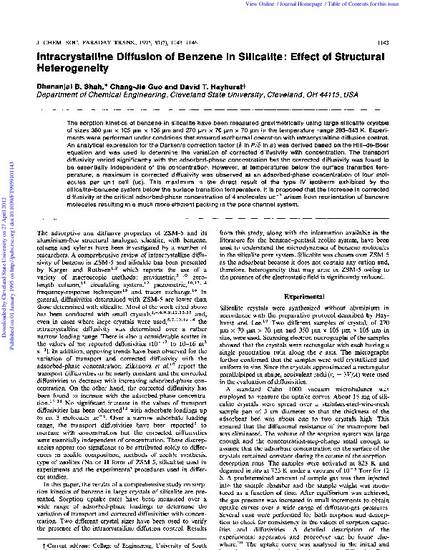
The sorption kinetics of benzene in silicalite have been measured gravimetrically using large silicalite crystals of sizes 350 µm × 105 µm × 105 µm and 270 µm × 70 µm × 70 µm in the temperature range 283–343 K. Experiments were performed under conditions that ensured isothermal operation with intracrystalline diffusion control. An analytical expression for the Darken's correction factor (δ In P/δ In a) was derived based on the Hill–de-Boer equation and was used to determine the variation of corrected diffusivity with concentration. The transport diffusivity varied significantly with the adsorbed-phase concentration but the corrected diffusivity was found to be essentially independent of the concentration. However, at temperatures below the surface transition temperature, a maximum in corrected diffusivity was observed at an adsorbed-phase concentration of four molecules per unit cell (uc). This maximum is the direct result of the type IV isotherm exhibited by the silicalite–benzene system below the surface transition temperature. It is proposed that the increase in corrected diffusivity at the critical adsorbed-phase concentration of 4 molecules uc–1 arises from reorientation of benzene molecules resulting in a much more efficient packing in the pore channel system.
Available at: http://works.bepress.com/dhananjai_shah/1/
